Episode 329: A Year in Review – Slow Flowers’ Highlights for 2017
December 27th, 2017
Podcast: Play in new window | Download
Subscribe: Apple Podcasts | Podcast Index | RSS | More
Welcome to the final Slow Flowers Podcast Episode of 2017.
The Slow Flowers Community and listenership of this program have grown to be larger than ever, with more than 265,000 total downloads since launching in July 2013. That’s amazing news and I’m thrilled to share it with you.
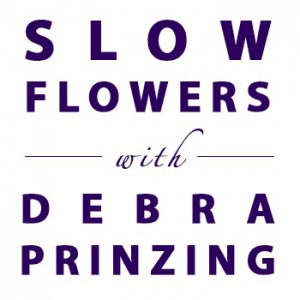 Every single week this year; in fact, every single week for the past 230 weeks, it has been my privilege to feature the voices of our Slow Flowers community with you. Unlike any other internet radio show in existence, the Slow Flowers Podcast is tailored to you and your interests, making its “must-listen” programming a habit among flower farmers and floral designers alike.
Every single week this year; in fact, every single week for the past 230 weeks, it has been my privilege to feature the voices of our Slow Flowers community with you. Unlike any other internet radio show in existence, the Slow Flowers Podcast is tailored to you and your interests, making its “must-listen” programming a habit among flower farmers and floral designers alike.
In producing and hosting the Slow Flowers Podcast, I seek out pioneers and personalities, style-makers and influencers — as well as unsung or little known heroes — who together are changing the floral landscape, disrupting the status quo, and bringing flower sourcing and growing practices, not to mention eco-conscious design methods, to the center of the conversation.
And thanks for joining in. Whether you’ve just discovered this podcast or are a longtime fan, I encourage you to take advantage of the immense body of knowledge that can be found in the archives here. We’ve updated the “play” and “download” buttons at the show notes that accompany each episode, making it simpler than ever to listen.
 Today we have a year-end listener giveaway, so listen to the end of this episode for details! We have two copies of floral activist and artist Mud Baron’s 2018 “Flowers on Your Head” calendar that he produced as a fundraiser for LA-based nonprofit 4 Women Ovary Where.
Today we have a year-end listener giveaway, so listen to the end of this episode for details! We have two copies of floral activist and artist Mud Baron’s 2018 “Flowers on Your Head” calendar that he produced as a fundraiser for LA-based nonprofit 4 Women Ovary Where.
As I have done since the beginning of 2014, I would like to devote today to the Slow Flowers Highlights of this past year. Next week, on January 3th, I will present the much anticipated 2018 Slow Flowers’ Floral Insights and Industry Forecast with you.
Covering the Slow Flowers Community has put me in a lot of airplane seats this year. I’ve been able to meet with, interview and gather together with florists and flower farmers in thirteen states and one Canadian Province. That’s amazing and I thank friends and colleagues who hosted Slow Flowers workshops, potluck dinners, cocktail parties, events and meet-ups Alaska, Arizona, California, Connecticut, Iowa, Florida, Massachusetts, Montana, New York, Oregon, Pennsylvania, Virginia, Washington, and Ontario, Canada, for amazing and inspiring experiences. And so far, 2018 promises to bring me more travel as I’ve already confirmed Slow Flowers appearances in Texas, Washington, D.C., Colorado, North Carolina, Iowa, Illinois, and of course, the Pacific Northwest, so get in touch if you’re interested in booking something in your community.
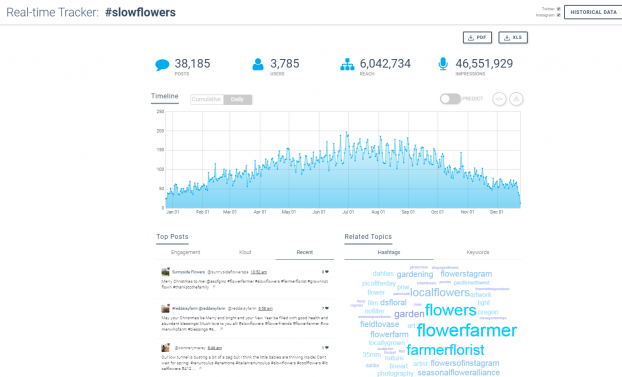
According to our social media tracking tools, in the past 365 days, the hashtag #slowflowers has hit 46.5 million impressions on Instagram and Twitter alone.
This #slowflowers hashtag is the floral industry’s most widely used brand intended to convey seasonal, local and sustainable floriculture — and I am humbled by the impact and reach of a term that originated with a tiny, 144-page book measuring 7-1/2 inches square — as it has exploded far beyond my imagination in the five years since.
Thank you for being a part of this movement and If you haven’t, I hope you’ll make the next step by investing in the continued relevance and success of this brand and join Slow Flowers as a member. Follow this link to learn more about the benefits and values of joining the Slow Flowers Movement.
So, let’s get started with my month-by-month recap of 2017!
January brought Slow Flowers to Tampa, Florida, and the Gulf Coast, including a lecture for the garden club of Boca Grande, one of the most beautiful beach spots on the planet. I loved connecting with Slow Flowers members while in the state and took great pleasure in touring a few botanical gardens to admire the diversity of the region’s flora. Later in the month, travel brought me to the other corner of the U.S. — to Fairbanks, Alaska, where I spent a few days attending and speaking at the Alaska Peony Growers Association winter conference. Two geographic and climactic extremes and two equally vital regions for local flowers and passionate growers.
Something else took place in January, an event that foreshadowed a major new collaboration for me — Florists’ Review published my article about a year-long creative project by Kelly Shore of Petals by the Shore. Called “Four Seasons of Floral Design,” the 11-page spread documented Kelly’s creative partnership with Maryland flower farmers Leon and Carol Carrier of PlantMasters. It was exciting to write the piece for a major floral industry trade magazine — one read regularly by mainstream and conventional audiences. For Kelly and her collaborators, as well as for the Slow Flowers community, the story illuminated often unheard voices of domestic agriculture and sustainable design in floristry. You can read more about that story here.
I found it pretty remarkable to see seasonal and local flowers designed so artistically, portrayed against the backdrop of a flower farm. I want to acknowledge and thank Travis Rigby, Florists’ Review‘s owner and publisher, for adding my storyteller’s voice and point of view to the magazine’s pages.
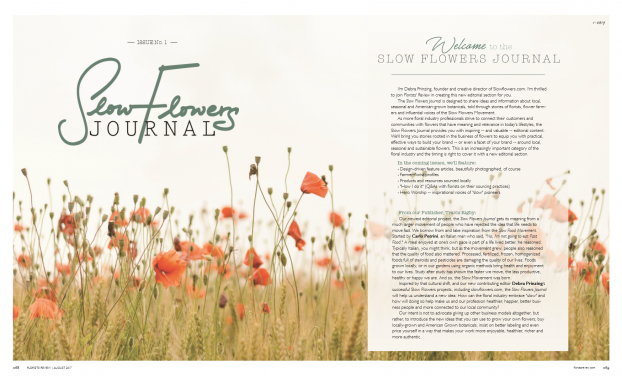
Here’s a sneak peek of our opening pages of the Slow Flowers Journal — launching inside the August issue of Florists’ Review.
That first article led to my stories appearing in subsequent months’ issues, each of which continued the Slow Flowers narrative. And then . . . Travis invited me to join Florists’ Review on a permanent basis as a contributing editor. After much dialogue and consideration, the new collaboration launched in August with a dedicated editorial section called the “Slow Flowers Journal.”
Since the first issue, I’m delighted to say that we’ve featured dozens of floral designers, farmer-florists, retail flower shops, makers and artists inside the magazine, under the Slow Flowers Journal banner, and with the mission and message presented as inspiring small business success stories.
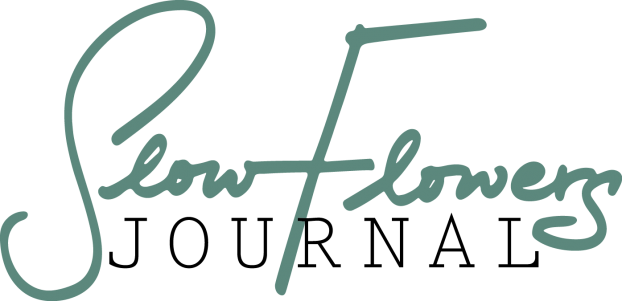 A footnote: I argued passionately to continue the Slow Flowers Journal name for this section. That’s because in January 2017, slowflowersjournal.com launched as an online magazine, designed to highlight and share this community’s members and their stories. Expanding to print has taken Slow Flowers Journal from a few thousand online readers to tens of thousands of print readers each month. That’s a big achievement for our brand!
A footnote: I argued passionately to continue the Slow Flowers Journal name for this section. That’s because in January 2017, slowflowersjournal.com launched as an online magazine, designed to highlight and share this community’s members and their stories. Expanding to print has taken Slow Flowers Journal from a few thousand online readers to tens of thousands of print readers each month. That’s a big achievement for our brand!
Moving into 2018, these stories will continue — I’d love your input and ideas, so be sure to follow links at the show notes for more ways to engage and become involved. If you haven’t started reading the Slow Flowers Journal, I encourage you to contact Florists’ Review for a free sample copy or take advantage of the generous discounted subscription rate offered to my listeners. You can subscribe to Florists’ Review and read our bonus Slow Flowers Journal content at the special rate of $21 for 12 issues — 62 percent off the cover price! Click here or call 1-800-367-4708.
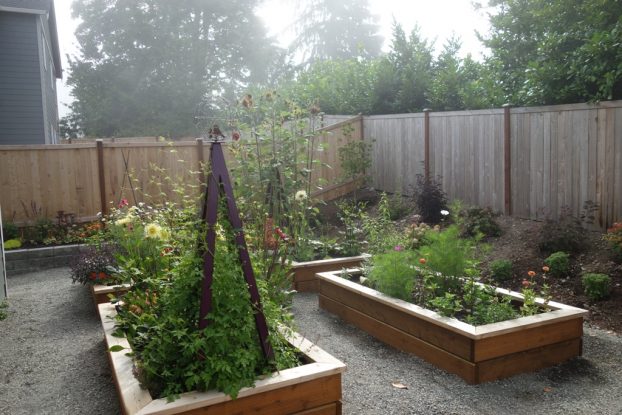
Slowly, but surely, the new SLOW FLOWERS CUTTING GARDEN is taking shape! Amazing how sunflowers and dahlias can enliving a few raised beds and make everything look abundant.
February was a busy month, personally, as my family and I finally ended our 18-month urban condo experiment and moved into a new home with a completely blank backyard – home to the new Slow Flowers Cutting Garden.
Over the remainder of 2017, I began building the cutting garden as a place to trial cut flowers and other botanicals, stage and produce DIY photo shoots, and create stories for gardening audiences and more. The support of sponsors who have shared everything from seeds (thanks Johnny’s Seeds) to bulbs (thanks Longfield Gardens) to my greater Garden Writers community, which supplied perennial and woody plants to trial, has been awesome. I promise that the garden’s evolution in the coming year will supply you with even more inspiration.
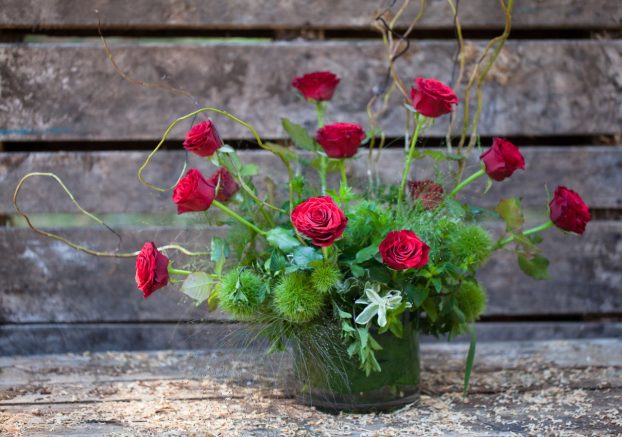
Wild-textured roses by Erin Shackelford, Camas Designs. A definite nod to the wildness of nature, from the heart. © Robert Shackelford Photography
Also in February, we produced the Valentine’s Day LOOK BOOK, sharing it across PR Web, a news distribution service. The gallery of sustainable floral design ideas from Slow Flowers member farms and florists was picked up by online news sites, and posted to the web, at slowflowersjournal.com and in a public Flickr gallery. Stories like these help to put you in the news and if you’re a Slow Flowers member, you’ve received (and I hope read and taken advantage of) ongoing “calls” for submissions that allow you to participate in similar opportunities to be published. Currently, for example, we’re collecting your submissions for an upcoming American-grown wedding floral story ~ so if you’re not a part of these opportunities and you’d like to be ~ get in touch!
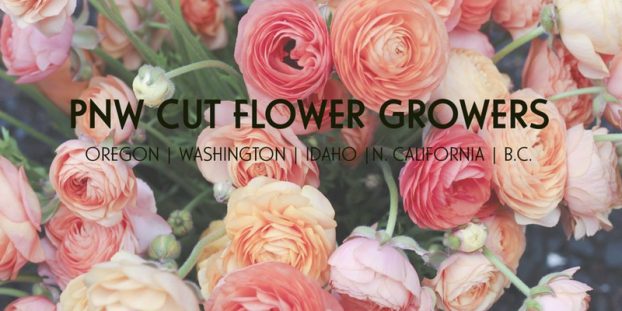 And I can’t end my February highlights without mentioning how gratifying it was to be an invited speaker at the third annual Pacific Northwest Cut Flower Growers meetup that month, held in Corvallis, Oregon. I shared the 2017 Floral Insights & Industry Forecast as part of my SLOW FLOWERS, AMERICAN STYLE presentation. I was thrilled to discuss what’s happening at all levels of the American-grown floral pipeline — from field to checkout counter, and to give the gathering of growers and farmer-florists insights into the opportunities they could can leverage for their businesses.
And I can’t end my February highlights without mentioning how gratifying it was to be an invited speaker at the third annual Pacific Northwest Cut Flower Growers meetup that month, held in Corvallis, Oregon. I shared the 2017 Floral Insights & Industry Forecast as part of my SLOW FLOWERS, AMERICAN STYLE presentation. I was thrilled to discuss what’s happening at all levels of the American-grown floral pipeline — from field to checkout counter, and to give the gathering of growers and farmer-florists insights into the opportunities they could can leverage for their businesses.
March
Following three wonderful Slow Flowers Creative Workshops taught in 2016, the first Creative Workshop of 2017 took place in March when I partnered with Anne Bradfield of Floressence in Seattle. We devoted a full day to floral design and writing about flowers — drawing on the perfect combination of talents that our creative students brought to the session. I continue to be encouraged and inspired by the willingness of those who sign up for my writing workshops. It’s often a vulnerable, risky experience; certainly a little uncomfortable, but always rewarding as those who do not consider themselves writers discover their voices and realize that having a personal floral narrative, a floral memoir of sorts, will reinforce their brand and how they share it with clients and customers.
Another highlight of March was my visit to Arizona and the fabulous meet-up of flower farmers and florists at Whipstone Farm in Paulden, Arizona. Ten of us gathered, many who made the drive from the Phoenix/Scottsdale area and others who live, grow flowers and design flowers at higher elevations in Arizona’s agricultural region near Prescott and Paulden. We even had two Alaska peony growers (and Scottsdale residents) join us to network with other flower farmers and learn about their home state’s flower farming scene. Thank you so much to Shanti and Cory Rade for hosting us, and for everyone who made that day so successful. The meeting laid the groundwork for a 2-part “Artisanal Flowers” workshop in November at the Desert Botanical Garden in Phoenix, taught by four of us who met that day in March.
April
Workshops and lectures continued in the month of April with two notable highlights. Thanks to underwriting by Better Homes & Gardens, I traveled to Des Moines, Iowa, to speak on Earth Day at the Wonder of Words Festival, a program of Downtown Des Moines and the Des Moines Greater Public Library. Of course, the topic was Slow Flowers, and I’m so grateful for my editors and friends at BH&G and Country Gardens for hosting me, and for Slow Flowers members Jennifer and Adam O’Neal of PepperHarrow Farm in Winterset, Iowa, for not only sharing their beautiful flowers at the event, but also allowing me to shine the light on their business as a valuable source for local and seasonal flowers in that community.
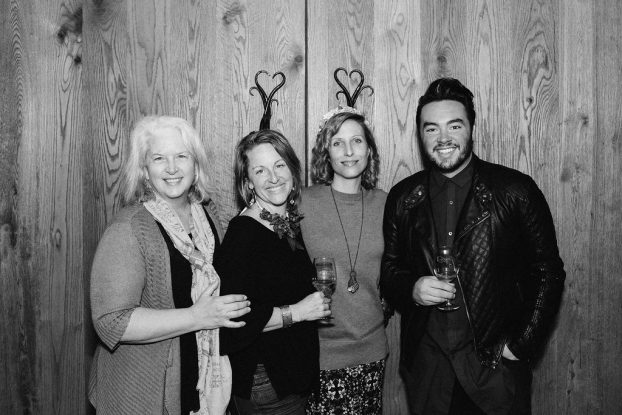
It was an honor to join Tobey Nelson, Susan McLeary and Kaleb Norman James as fellow instructors of the Whidbey Island Workshop (c) Sullivan and Sullivan
Fantastic teaching experiences continued when I joined Tobey Nelson at the first Whidbey Island Flower Workshop as a guest instructor. The three-day workshop featured Susan McLeary of Passionflower and Seattle-based Kaleb Norman James, a wide array of design sessions and photography, all local flowers from farms on Whidbey and other Pacific Northwest fields and meadows. I started off the workshop with a series of writing prompts and exercises designed to stimulate participants to find a deeper language in their writing. It was a fantastic experience to not only listen to the short pieces that participants wrote and shared, but also – since then – to follow along via social media and witness continued growth as writers and storytellers.
May brought me to San Diego to teach at Flower Hill for a weekend garden and flower festival, and a chance to record a number of interviews for this podcast, followed by . . .
. . . June, which returned me to the Pittsburgh area for a series of wonderful events, including teaching about Slow Flowers at the Phipps Conservatory — featuring a design session with all locally grown Pittsburg area flowers from Slow Flowers member farms and USA-made vases supplied by Syndicate Sales.
I also partnered with longtime Slow Flowers members Jimmy Lohr and Jonathan Weber of greenSinner to host a meet-up in their beautiful Pittsburgh studio, and then, for the main event — I reunited with my friends Nancy and Jim Cameron of Destiny Hill Flower Farm for two reasons.
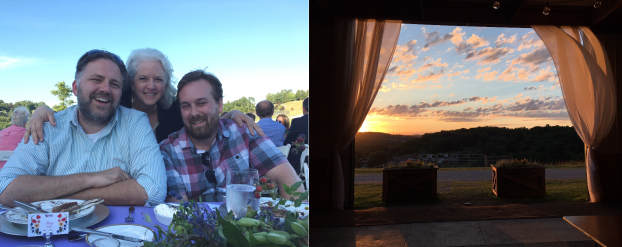
The Field to Vase Dinner at Destiny Hill Lavender Farm was lovely. I enjoyed being with Jimmy Lohr (left) and Jonathan Weber (right) AND taking in the spectacular sunset as the evening came to a close.
First, they held a lovely dinner in their lavender fields, as part of the Field to Vase Dinner Tour, which I attended, and second, at their 2017 Lavender Festival, where I spoke and demonstrated floral design using some of the gorgeous blooms grown at Destiny Hill. St. Lynn’s Press, which is based in Pittsburgh, was in attendance at both the Phipps Conservatory and Lavender Festival events, which made it really fun to hang out with my publisher, editor and book designer while selling and signing copies of The 50 Mile Bouquet and Slow Flowers.
 American Flowers Week came at the very end of June, with many events and celebrations taking place around the country, led by Slow Flowers members representing all levels of the floral continuum, 100% grassroots and authentic to their regions. I’ll recap American Flowers Week in the second portion of this podcast, but here, I must stop and highlight a new feature introduced in 2017 — the Slow Flowers Summit. With participation at an all-time high, I was inspired to do something ambitious and frankly, a little terrifying — and that was to stage the first-ever, day-long conference as a centerpiece of American Flowers Week.
American Flowers Week came at the very end of June, with many events and celebrations taking place around the country, led by Slow Flowers members representing all levels of the floral continuum, 100% grassroots and authentic to their regions. I’ll recap American Flowers Week in the second portion of this podcast, but here, I must stop and highlight a new feature introduced in 2017 — the Slow Flowers Summit. With participation at an all-time high, I was inspired to do something ambitious and frankly, a little terrifying — and that was to stage the first-ever, day-long conference as a centerpiece of American Flowers Week.
Held on July 2nd in Seattle, the Slow Flowers Summit was an incredible experience for those who attended and spoke. Nearly 100 members of the Slow Flowers community came together — along with industry leaders and media folks — to listen, learn, dialogue and consider new models for doing business, making art, living intentionally and authentically and challenging assumptions and attitudes.
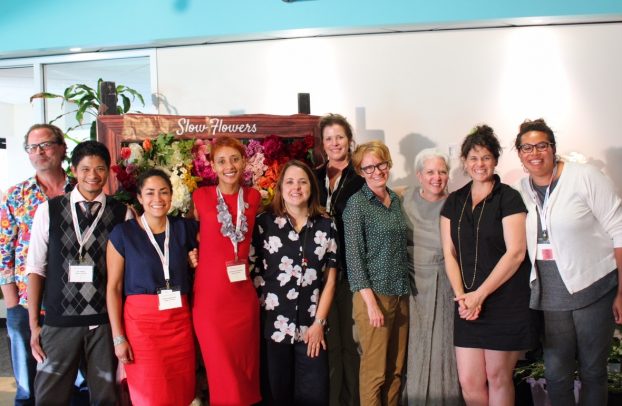
Slow Flowers SUMMIT presented an amazing lineup of speakers, from left: James Baggett, Riz Reyes, Nicole Cordier Wahlquist, Chantal Aida Gordon, Emily Ellen Anderson, Teresa Sabankaya, Amy Stewart, Debra Prinzing, Lisa Waud and Leslie Bennett.
We had an incredible lineup of speakers, including keynote speaker Amy Stewart whose presentation provided an opportunity to relive and review the past decade in floral, the decade following her publication of the groundbreaking book Flower Confidential.
Chantal Aida Gordon, Leslie Bennett, Riz Reyes and Nicole Cordier Wahlquist came together on a panel examining inclusivity and representation in floristry and horticulture. I had named this session “Where is the Diversity?” but soon learned how limited that title was. I am deeply grateful to these incredible individuals for agreeing to be part of the Summit and for sharing their personal stories with us, stretching me personally and challenging me to make changes in my own practices as a writer and editor.
Our afternoon sessions turned to floristry and the life of a designer, featuring Teresa Sabankaya of Bonny Doon Garden Co., Emily Ellen Anderson of Local Creative and Lisa Waud of pot & box — each of whom added new ideas and ways of approaching floral design. The Summit ended with a fun cocktail party and we left with new connections and a sense of optimism about the influence this burgeoning movement is having on the floral industry. I truly believe that the Slow Flowers Movement gives the floral industry a better way to do business, and I hope the Summit and indeed all of my projects, shine the light on those practices.
I have a special gift for listeners — the first two videos from the Slow Flowers Summit are now available, thanks to our amazing tech team, Andrew and Hannah Brenlan.
Watch Amy Stewart’s keynote presentation below:
Watch the Diversity, Inclusion and Representation Panel, moderated by Chantal Aida Gordon, here:
https://vimeo.com/248836713
More Slow Flowers Summit 2017 videos will released in the coming weeks, so please take time to check these out and I’ll keep you posted in the future releases!
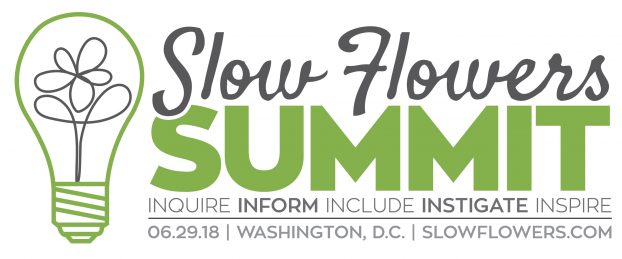 And by the way, you can SAVE THE DATE for the 2018 Slow Flowers Summit, scheduled for Friday, June 29th! More details will be announced in January, but for now, mark your calendars. The Summit will take place in conjunction with the American Institute of Floral Designers (AIFD) national symposium in Washington, D.C., and we’ll have another slate of amazing topics and speakers. It’s exciting to bring the Summit to the east coast where I hope we’ll reach even more of you!
And by the way, you can SAVE THE DATE for the 2018 Slow Flowers Summit, scheduled for Friday, June 29th! More details will be announced in January, but for now, mark your calendars. The Summit will take place in conjunction with the American Institute of Floral Designers (AIFD) national symposium in Washington, D.C., and we’ll have another slate of amazing topics and speakers. It’s exciting to bring the Summit to the east coast where I hope we’ll reach even more of you!
I can’t leave the month of July without a mention of my return visit (for the third time) to Homer, Alaska, and the beautiful people and peonies there. I was the guest of Beth Van Sandt and Kurt Weichhand of Scenic Place Peonies, for the first-ever Field to Vase Dinner in Alaska — held at the peak of peony season. An incredible dining experience! I’m so proud of what Beth and Kurt are doing. In fact, I’m so proud to have had the chance to document the stories of Alaska’s Peony community, ever since my first visit in 2012 when I met peony growers across the state.
It has been a true privilege to follow along and capture this amazing chapter, seen through my first-person experiences. This year was especially exciting because the Field to Vase Dinner brought Kelly Shore of Petals by the Shore to Homer, where she served as the featured floral designer.
A highlight was spending a day together with Kelly, along with floral design friend Lisa Thorne of Thorne & Thistle, and model (and aspiring flower farmer) Ashley Johnson, and watch as the first floral fashion shoot for American Flowers Week 2018 took place. With photographers Joshua and Brittney Veldstra (recently named Alaska’s best photographers by the Anchorage Daily News), I witnessed what happens when incredibly beautiful American grown flowers — in this case the lavish summer peonies from Scenic Place Peonies — and incredibly inventive and talented artists come together. You’ll have to wait for June to see what I’m talking about — that’s when the lineup of American Flowers Week fashions will first be published in Florists’ Review. I can’t wait for you to see what I’m hinting at!
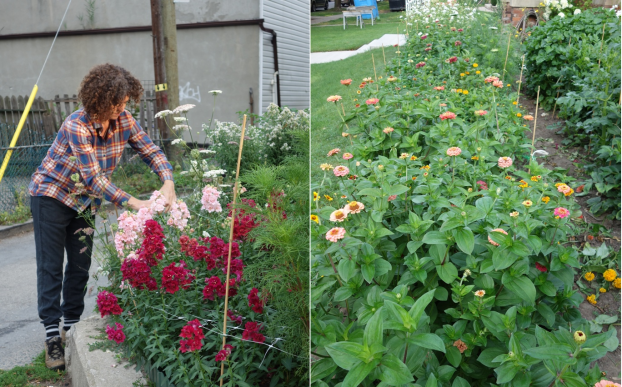
Flowers flourish in Toronto’s postage-stamp-sized front yards, lovingly planted by Sarah Nixon of My Luscious Backyard.
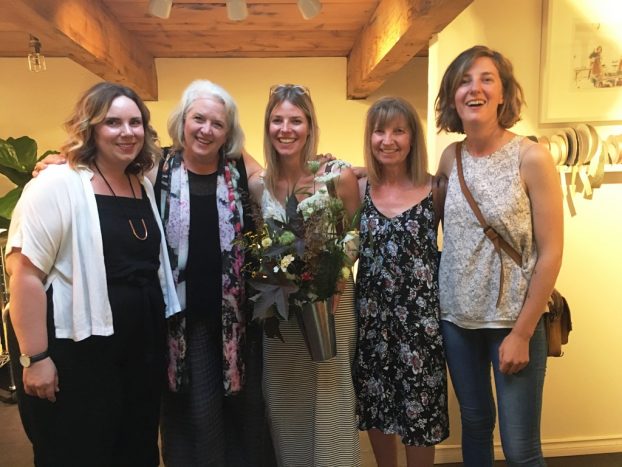
A reunion of the Toronto floristas who I met at Flower House Detroit when they participated as designers. From left: Becky De Oliveira of Blush and Bloom, me, Jessica Hunter of A Fine Medley, Heather Payne (Jessica’s mom), and Jessica Gale of Sweet Gale Gardens.
In August, I traveled east starting with a lecture about Slow Flowers at the annual Garden Writers Association conference in Buffalo, New York, followed by three fabulous days in Ontario, Canada — first, at the Association of Specialty Cut Flower Growers conference where I reconnected with longtime friends and met many new ones. It was so much fun to meet more talented flower farmers and farmer-florists and learn about the ways they are changing Canada’s floral landscape and beyond. The visit concluded with a lovely evening in Toronto, at a Slow Flowers Meet-up hosted by Becky De Oliveira of Blush and Bloom.
I’ve long wanted to record a Podcast interview with Sarah Nixon of My Luscious Backyard, and was delighted to spend time with her on this visit, as well. It was a short and sweet visit that laid the groundwork for some cool Slow Flowers Canada projects that you’ll learn more of in the coming year.
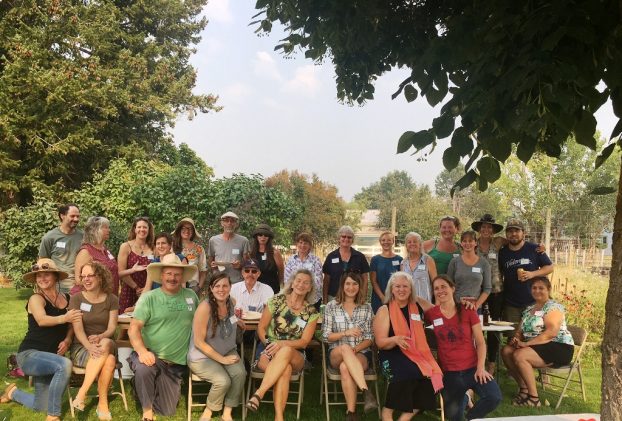
What a fabulous gathering of kindred spirits — pioneers in Montana’s cut flower industry — at Hart’s Garden & Nursery in Missoula.
September kept me a little closer to home, and I took a long-anticipated trip to the nearby state of Montana! I began in Missoula, with a fabulous tour of local flower farms and a wonderful meet-up hosted by George and Marcia Hart of Hart’s Garden & Nursery.
It was a bonus to have two Idaho friends join us — and the group absorbed the depth of flower farming knowledge of Jeriann Sabin and Ralph Thurston of Bindweed Flower Farm in Blackfoot, Idaho — since we asked them to speak, as well! Kathy and Adam Sherba of Mighty Fine Farm generously housed us at a fantastic Montana-style mountain lodge, and Carly Jenkins and Jamie Rogers of Killing Frost Farm were in on all the planning — and it added up to even more Slow Flowers connections in a state where flower farming is emerging as an exciting chapter in local agriculture.
From there, I headed to Pray, Montana and Chico Hot Springs, where I spoke at the Rocky Mountain Gardening Live conference and met up with another Slow Flowers member there, Cindy Hanson of The Herb and Garden in Helena, to record a podcast episode with her. I love what’s happening in Montana; like Alaska, it’s a state where local flowers may at first come as a surprise — and I’m thrilled to help share these stories.
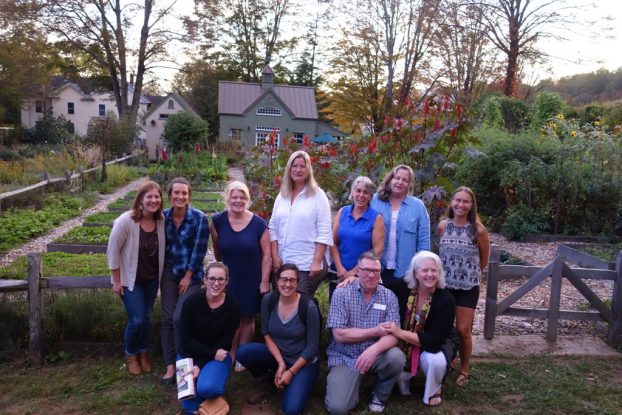
Several current and prospective Slow Flowers members in Connecticut joined me at Trout Lily Farm in early October — what a wonderful Meet-Up at an inspiring place!
In October, I headed East again with a stop in Connecticut at Trout Lily Farm in Guilford, where Michael Russo and Raymond Lennox hosted a lovely Slow Flowers Meet-Up and gathering, including a tour of their beautiful, organic flower farm. More than 20 of us enjoyed hearing from one another — florists and flower farmers alike — as we reveled in the waning dahlia days and reflected on what each had accomplished that season.
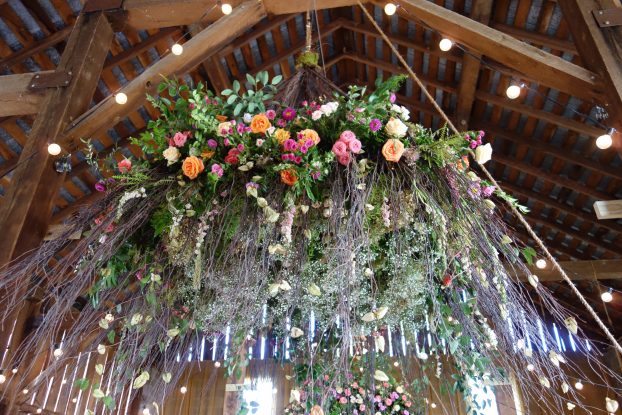
One of three breathtaking floral chandeliers, created by Gregor Lersch and Holly Chapple, which hung from the barn’s rafters for the Field to Vase Dinner at Hope Flower Farm.
Early the next day, I headed to Waterford, Virginia, and Holly and Evan Chapple’s Hope Flower Farm. That was another top moment of 2017, as I first enjoyed dining with Slow Flowers friends at the Field to Vase Dinner held inside their gorgeous vintage barn.
That was followed by two incredible days of Holly’s second annual Flowerstock, a two-day design and creativity fest with amazing speakers, beautiful flowers, incredible music, a true sense of community, and more.
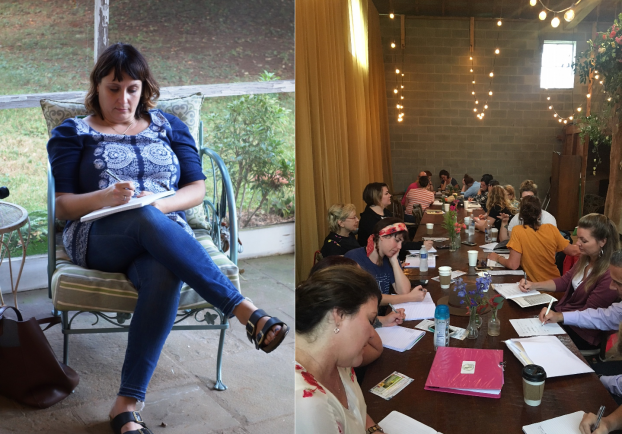
It was so fun to teach some of the Slow Flowers Creative Workshop writing modules to Flowerstock attendees!
It was an honor to be part of the speaker lineup and to teach two creative writing sessions to florists in attendance. I think we all make deeper connections with our art practices when learning takes place somewhere beautiful — and that is certainly what I experienced at Flowerstock. I hope to return!
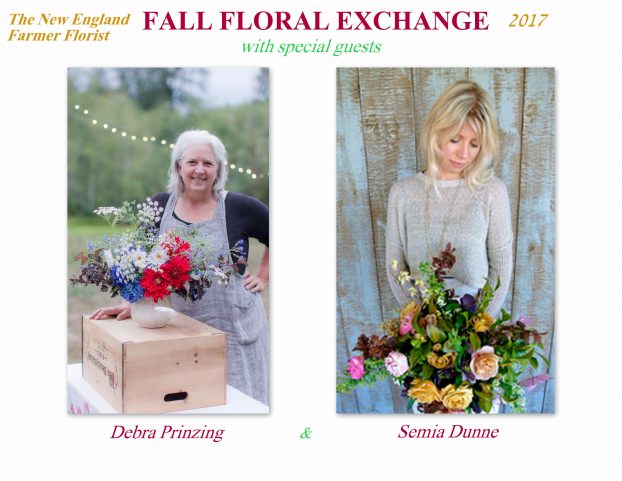 In November, travel continued, and I was delighted to make the trip to Boston and Providence, where the New England Farmer Florist Connection hosted me at their fall gathering. It was a marathon 48-hour visit to New England, meaningful in many ways, including getting to spend an evening with my Boston family! The passion for local and seasonal flowers shared by people who came to the meet-up in Providence was contagious! Thanks to Debbie Bosworth of Dandelion House Flower Farm, Semia Dunne of Flowers by Semia and the new wholesale venture The Floral Reserve, Monica O’Malley Tavares of Princes Snow Farm and (in absentia due to the early arrival of her baby) Jill Landry of Beach Plum Floral for hosting a wonderful and inspiring gathering!
In November, travel continued, and I was delighted to make the trip to Boston and Providence, where the New England Farmer Florist Connection hosted me at their fall gathering. It was a marathon 48-hour visit to New England, meaningful in many ways, including getting to spend an evening with my Boston family! The passion for local and seasonal flowers shared by people who came to the meet-up in Providence was contagious! Thanks to Debbie Bosworth of Dandelion House Flower Farm, Semia Dunne of Flowers by Semia and the new wholesale venture The Floral Reserve, Monica O’Malley Tavares of Princes Snow Farm and (in absentia due to the early arrival of her baby) Jill Landry of Beach Plum Floral for hosting a wonderful and inspiring gathering!
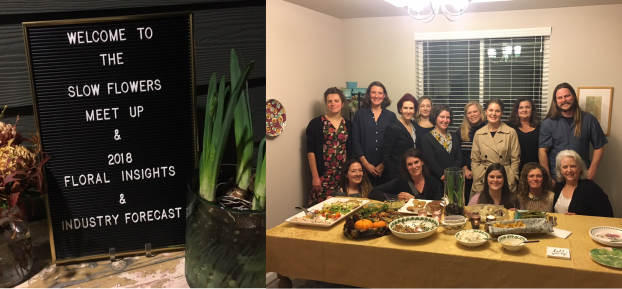
The #slowflowerscommunity in Seattle joined me for a Holiday Meet-Up. It was lovely to be with so many kindred spirits!
As the year came to a close, I kept Slow Flowers closer to home and hosted a local meet-up for Seattle flower farmers and florists, professional colleagues and friends whose enthusiasm and support buoys me day in and day out. What a year!
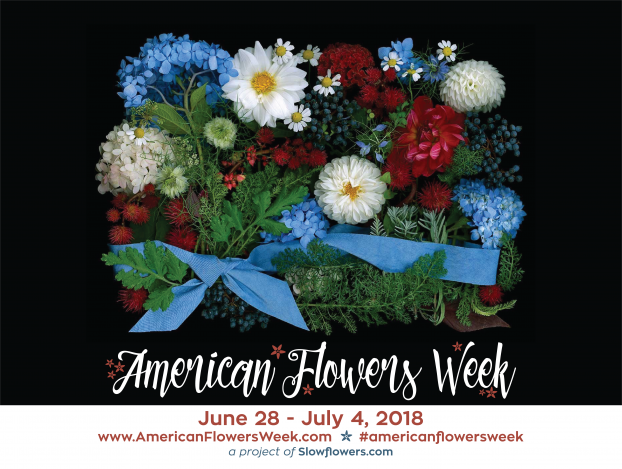
I commissioned Connecticut botanical artist Ellen Hoverkamp to create our American Flowers Week 2018 image and branding!
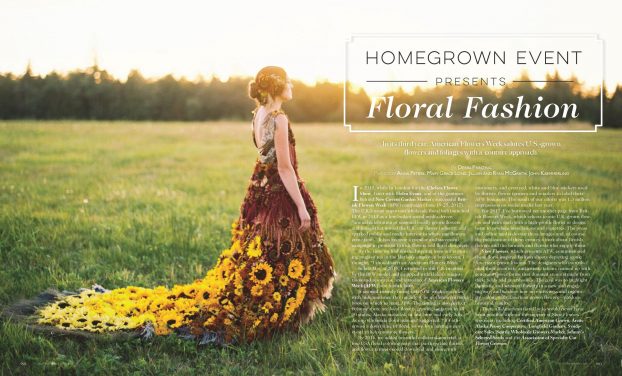
The lovely opening spread of my American Flowers Week story for Florists’ Review features the Sunflower Gown, photographed by Anna Peters
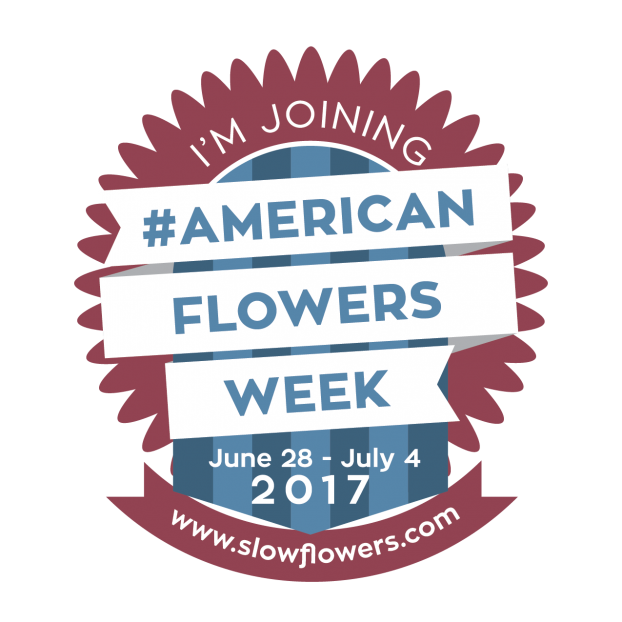 Our third annual American Flowers Week broke all past metrics for participation, impressions and reach. A highlight was the beautiful, 10-page spread in the June issue of Florists’ Review, featuring the work of many Slow Flowers members, flower farmers, floral designers and other creatives.
Our third annual American Flowers Week broke all past metrics for participation, impressions and reach. A highlight was the beautiful, 10-page spread in the June issue of Florists’ Review, featuring the work of many Slow Flowers members, flower farmers, floral designers and other creatives.
Slow Flowers produces American Flowers Week during the seven days leading up to July 4th. I was inspired to launch this project in 2015 with encouragement from the team behind British Flowers week (which started in 2013).
As American Flowers Week returned for its third year as a social media campaign to advocate, educate and raise awareness about American flowers, the message and branding became more refined and focused. Together we added new layers of creativity and excitement, and consequently, realized higher impact for our efforts.
American Flowers Week asked you, the Slow Flowers Community, to post photos of your red-white-and-blue flowers and designs on Twitter, Instagram and Facebook using the hashtag #americanflowers week.
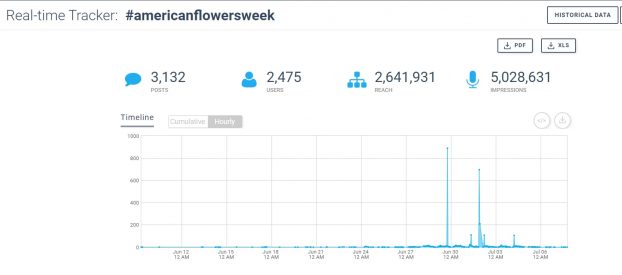 The one-week crusade encouraged everyone involved in flower farming and floral design to participate and draw attention to the cause. That enthusiasm you’re your creative efforts paid off in measurable ways. In a one-month period encompassing American Flowers Week this year, we generated more than 5 million impressions on Instagram and Twitter alone, up from 1.3 million impressions during the same campaign period in 2016. That’s notable, friends.
The one-week crusade encouraged everyone involved in flower farming and floral design to participate and draw attention to the cause. That enthusiasm you’re your creative efforts paid off in measurable ways. In a one-month period encompassing American Flowers Week this year, we generated more than 5 million impressions on Instagram and Twitter alone, up from 1.3 million impressions during the same campaign period in 2016. That’s notable, friends.
 Reflecting the dazzling botanical diversity of American-grown flowers and foliages, five talented individuals created wearable floral fashions symbolizing the best domestic crops and seasonal varieties at our fingertips — portrayed inventively to inspire others.
Reflecting the dazzling botanical diversity of American-grown flowers and foliages, five talented individuals created wearable floral fashions symbolizing the best domestic crops and seasonal varieties at our fingertips — portrayed inventively to inspire others.
I want to acknowledge and thank the teams that made it happen, including our Sunflower Dress team: Amy Kunkel-Patterson of Gather Design Co., the flower farmers and staff of the Seattle Wholesale Growers Market who generously donated more than 900 stems of botanicals, as well as Vivian Larson of Everyday Flowers in Stanwood, Washington, whose farm was our setting, and Kelly and Pam Uhlig of Sonsine Farm in Langley, Washington — Kelly was our sunflower dress model — as well as gifted photographer Anna Peters and Yessie Libby, whose hair and makeup so beautifully supported the look Amy envisioned.
Pennsylvania designer Tara Folker of Splints & Daisies worked her magic with winter greenhouse crops generously donated by Sun Valley Flower Farm — tulips, calla lilies, freesias and irises, as well as ornamental cabbage, ferns and huckleberry – to conjure an edgy botanical cape for her model, Ashley Garner. With photography by Jillian and Ryan McGrath of With Love & Embers and hair/makeup by Stefani Burket of Bonafide Ginger, the high-fashion imagery elevated familiar blooms to a new level.
Longtime Slow Flowers supporter Riz Reyes of RHR Horticulture devised our menswear look using a tapestry of flora both cultivated and foraged from landscapes Riz manages. The final vest and jacket, showcased his particular expertise in horticulture. We partnered with Seattle photographer Mary Grace Long and makeup artist Yessie Libby to photograph model Alex Brooks in the depths of winter for stunning results.
When I asked Teresa Sabankaya of Bonny Doon Garden Co. in Santa Cruz to be part of American Flowers Week, there was no doubt that California roses would be at the heart of this project. Hybrid tea roses, spray roses and garden roses grown by her friend and longtime supplier Paul Furhman of California Pajarosa in Watsonville, as well as floral ingredients that Teresa harvested from Bonny Doon Garden Co.’s cutting garden, comprised a fanciful rose tutu, headpiece and décolletage modeled by Antalia Sabankaya. With hair by Carly Vollers and makeup by Zachary Winer, and photography by John Kaemmerling, the final looks were simply lovely. “I want people to look at these pictures, to look at those flowers, and feel the way I feel when I get to design with them,” Teresa says.
Denver floral designer Arthur Williams of Babylon Floral Design created our final piece of the American-grown floral fashion collection with just-picked Colorado-grown peonies supplied by Chet and Kristy Anderson of The Fresh Herb Co. The Asian-inspired shoot with photographer Nicole Marcelli used Denver’s iconic art and cultural destinations as the backdrop and portrayed artist and model Andrea Li as muse.
Thank you to all of you for making 2017 the best year to date for American Flowers Week.
American Flowers Week benefitted from the support of Slow Flowers’ sponsors, including Certified American Grown, Arctic Alaska Peonies, Seattle Wholesale Growers Market, Syndicate Sales, Longfield Gardens, Johnny’s Selected Seeds and the Association of Specialty Cut Flower Growers. Without their in-kind and financial underwriting, I would not have been able to commission our fantastic floral fashions or capture the compelling imagery that has been so widely shared by you and others along all stops in the floral continuum.
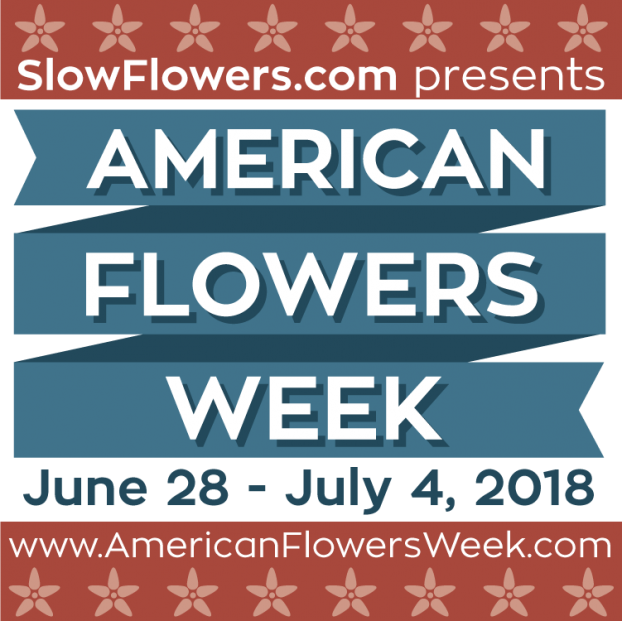 Get ready for 2018 when American Flowers Week continues during June 28th to July 4th. We’ve added more stories throughout the year to the blog at Americanflowersweek.com to stimulate and spark your planning. We have commissioned some amazing NEW floral fashion shoots, inspired by iconic American cut flowers, and I’m confident that 2018 will be bigger and better than ever, as we encourage even more people to ask for American grown flowers at the cash register and from their local florist. Having a single week devoted to promoting this message is a benefit you can definitely use to your advantage in your own market.
Get ready for 2018 when American Flowers Week continues during June 28th to July 4th. We’ve added more stories throughout the year to the blog at Americanflowersweek.com to stimulate and spark your planning. We have commissioned some amazing NEW floral fashion shoots, inspired by iconic American cut flowers, and I’m confident that 2018 will be bigger and better than ever, as we encourage even more people to ask for American grown flowers at the cash register and from their local florist. Having a single week devoted to promoting this message is a benefit you can definitely use to your advantage in your own market.
More Slow Flowers resources:
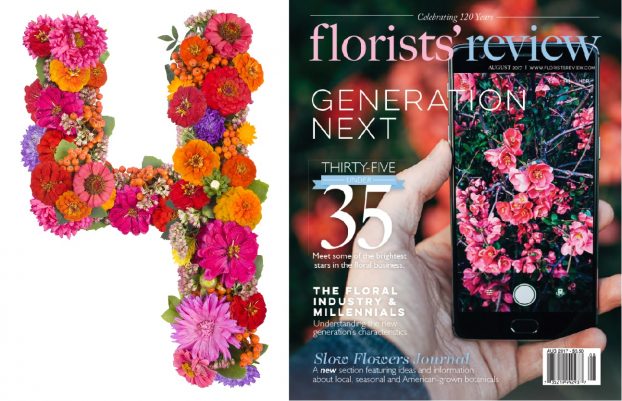
In 2017, we celebrated the 4th anniversary of the Slow Flowers Podcast with a special guest and big announcement!
This podcast brought you 52 new episodes and even more appealing voices, ideas and topics in 2017. It’s remarkable to realize that this show is already well into its 5th year of delivering excellent and inspiring content to you.
Thank you to all of our guests who agreed to share their stories with me, and through the power of technology, with you! We’ve recorded in flower fields and greenhouses, in traveling cars, on front porches, in floral studios, hotel lobbies, not-so-quiet coffee shops, a stairwell or two, and via Skype and cell phones.
When I ask, and when people say “yes” and agree to appear on the Slow Flowers Podcast, the ripple effect begins. You have no idea, actually none of us have a full idea, of how powerful this medium is for sharing ideas, inspiration, inventiveness and industry. The investment of time and talents from guests and listeners alike, get me excited and motivated to continue this journey. May just one of the topics or individuals featured in 2017 plant a seed for your own growth in the coming year.
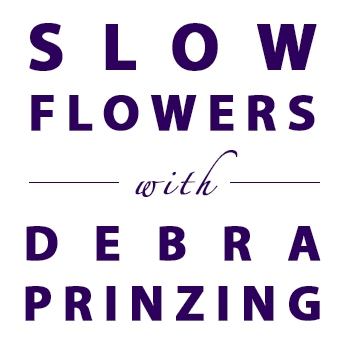 As I mentioned at the top of this episode, we’re closing up the year with 265,000 downloads of the Slow Flowers Podcast, which means this program has been downloaded an average of 10,000 times each month in 2017. WOW. What a great way to end the year — and thank you to those who take the time to reach out and tell me how valuable this content is to you.
As I mentioned at the top of this episode, we’re closing up the year with 265,000 downloads of the Slow Flowers Podcast, which means this program has been downloaded an average of 10,000 times each month in 2017. WOW. What a great way to end the year — and thank you to those who take the time to reach out and tell me how valuable this content is to you.
As the Slow Flowers Movement gains more supporters and more passionate participants who believe in the importance of the American cut flower industry, the momentum is contagious. I know you feel it, too.
I value your support and if you have learned anything useful from this podcast in the past year, may I suggest you show your thanks and click the Donate button on our homepages? It would mean so much to have your financial support, as well.
Before I close, remember that two of you will receive a 2018 Flowers on Your Head calendar, produced and photographed by our friend Mud Baron. Here’s how to enter: Post a photo of YOU with American-grown flowers — either holding them or wearing them on your head — to Instagram and be sure to use the hashtags #slowflowerspodcast and #flowersonyourhead. We’ll draw from the entries at random on December 31st and announce the winners during the first episode of 2018 — on January 3rd.
A final thank you to our sponsors for 2017, organizations and companies that have supported Slow Flowers and all of our programs this year, including this podcast, American Flowers Week, Slowflowers.com, the online directory to American grown flowers, as well as the new channels, Slow Flowers Journal and the Slow Flowers Summit.
Certified American Grown Flowers. The Certified American-Grown program and label provide a guarantee for designers and consumers on the source of their flowers. Take pride in your flowers and buy with confidence, ask for Certified American Grown Flowers. To learn more visit americangrownflowers.org.
Arctic Alaska Peonies, a cooperative of 50 family farms in the heart of Alaska providing high quality, American Grown peony flowers during the months of July and August. Visit them today at arcticalaskapeonies.com
Seattle Wholesale Growers Market, a farmer-owned cooperative committed to providing the very best the Pacific Northwest has to offer in cut flowers, foliage and plants. The Growers Market’s mission is to foster a vibrant marketplace that sustains local flower farms and provides top-quality products and service to the local floral industry. Find them at seattlewholesalegrowersmarket.com
Longfield Gardens provides home gardeners with high quality flower bulbs and perennials. Their online store offers plants for every region and every season, from tulips and daffodils to dahlias, caladiums and amaryllis. Visit them at longfield-gardens.com.
Syndicate Sales, an American manufacturer of vases and accessories for the professional florist. Look for the American Flag Icon to find Syndicate’s USA-made products and join the Syndicate Stars loyalty program at syndicatesales.com.
Johnny’s Selected Seeds, an employee-owned company that provides our industry the best flower, herb and vegetable seeds — supplied to farms large and small and even backyard cutting gardens like mine. Check them out at johnnysseeds.com.
Association of Specialty Cut Flower Growers. Formed in 1988, ASCFG was created to educate, unite, and support commercial cut flower growers. It mission is to help growers produce high-quality floral material, and to foster and promote the local availability of that product. Learn more at ascfg.org
I’m Debra Prinzing, host and producer of the Slow Flowers Podcast. Next week, you’re invited to join me in putting more American grown flowers on the table, one vase at a time. And If you like what you hear, please consider logging onto Itunes and posting a listener review.
The content and opinions expressed here are either mine alone or those of my guests alone, independent of any podcast sponsor or other person, company or organization.
The Slow Flowers Podcast is engineered and edited by Andrew. A very special thank you to Andrew for his tireless and loyal support. He shows up and edits this podcast week in and week out — and it’s such a gift to work with him. Learn more at shellandtree.com.









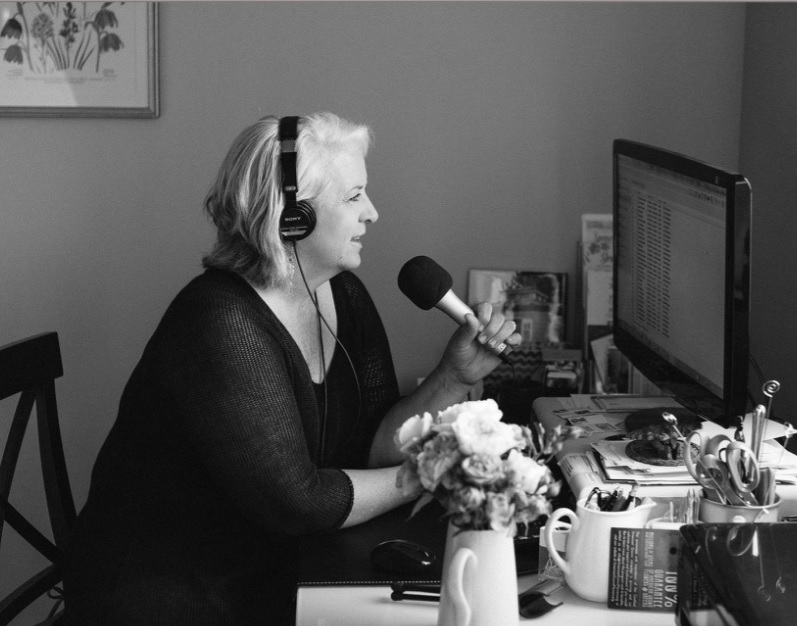


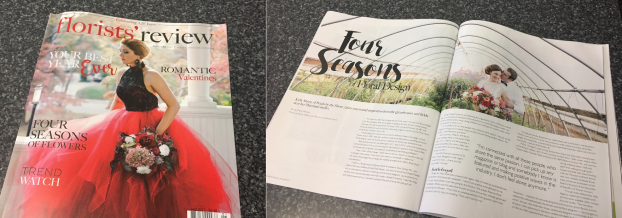

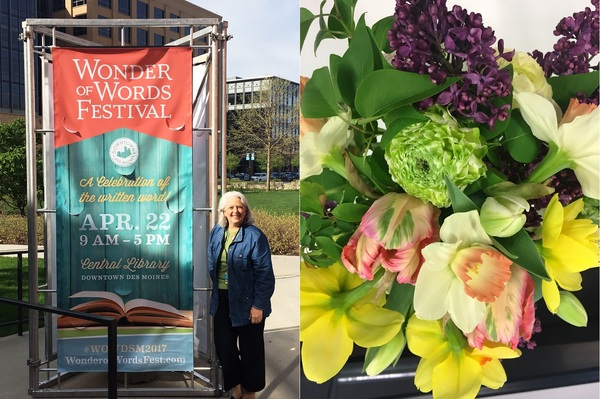
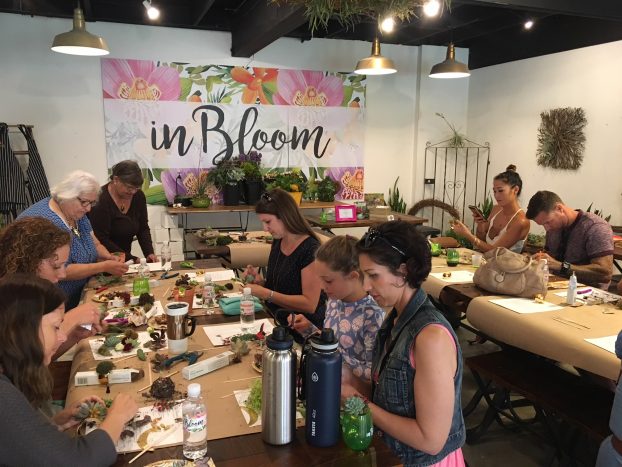
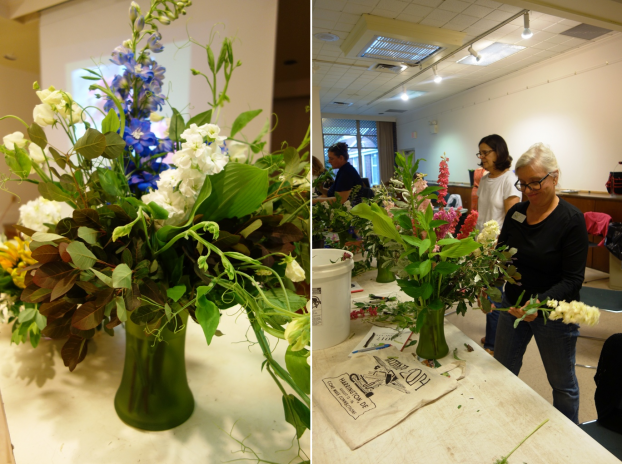
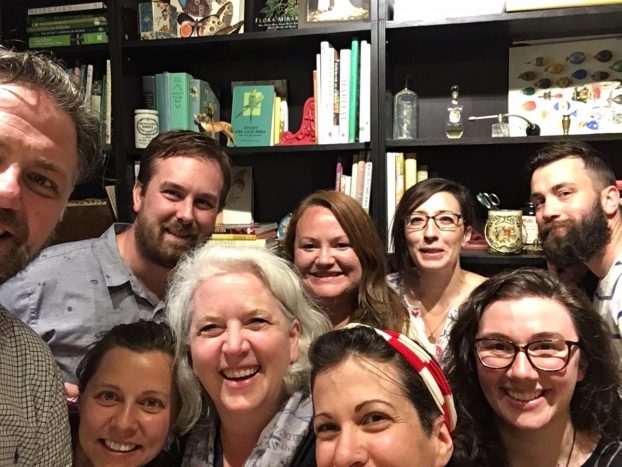
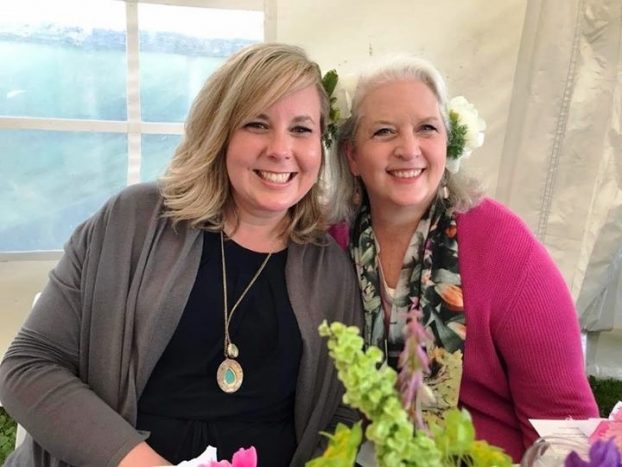
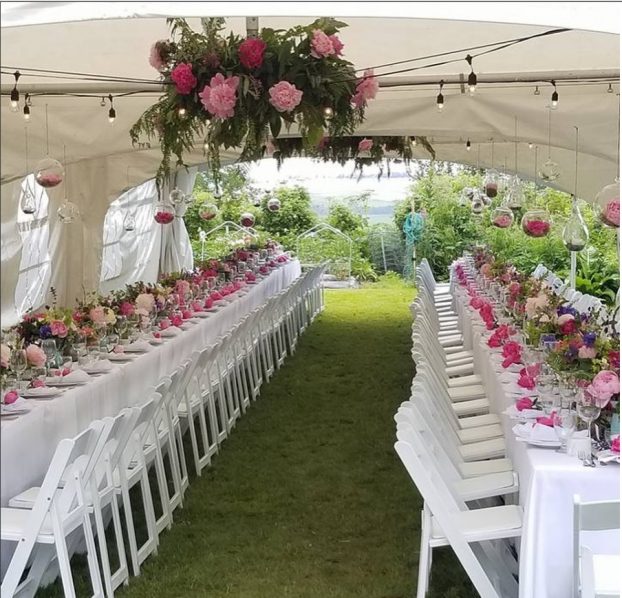
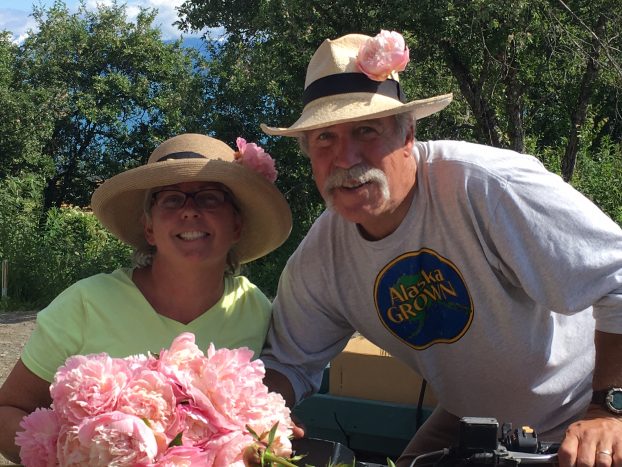
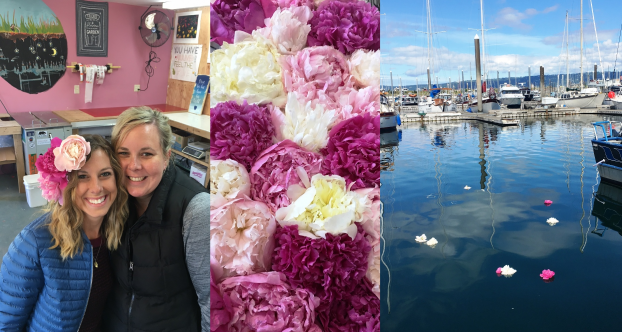
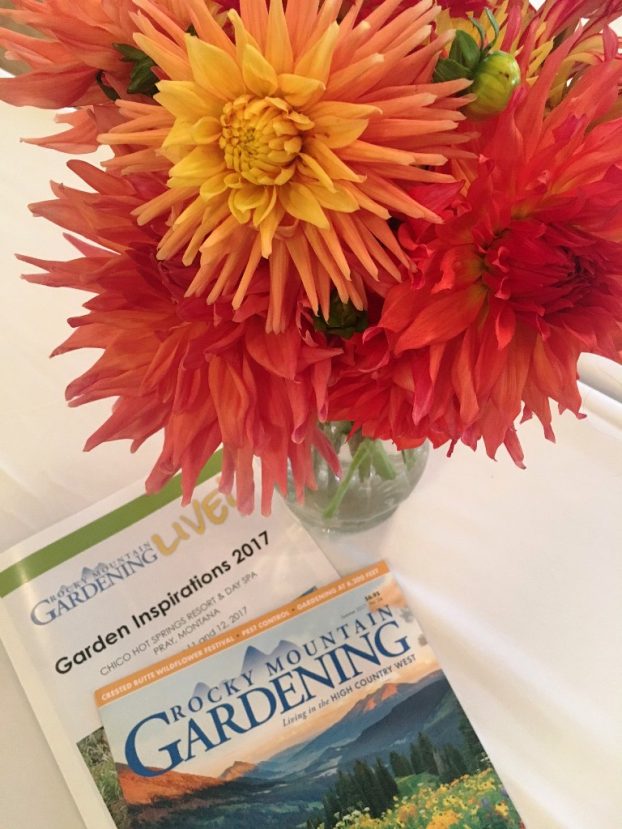
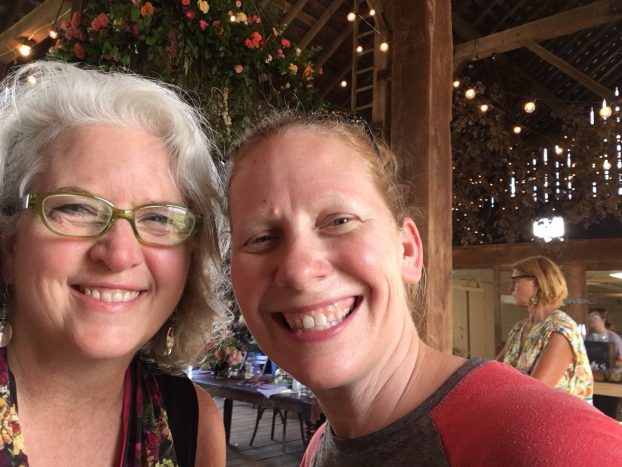
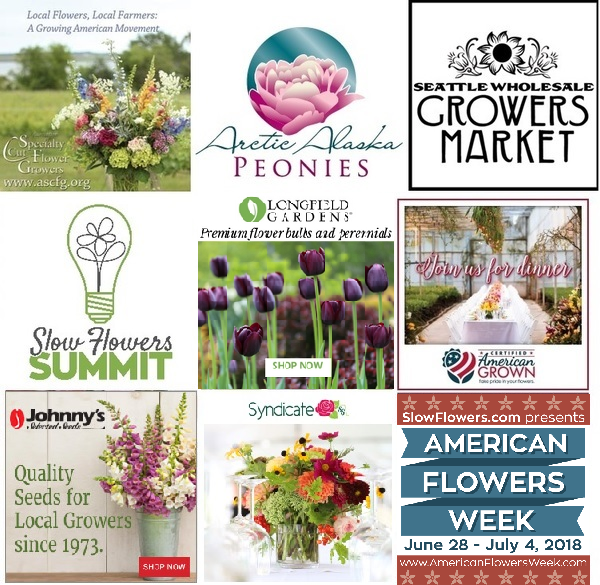
December 27th, 2017 at 7:05 pm
[…] news and I’m thrilled to share it with you. Every single week this year; in fact, […]Episode 329: A Year in Review – Slow Flowers’ Highlights for 2017 this post has been replublished from the original […]